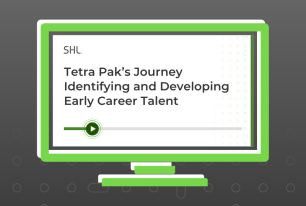Lessons in Onboarding: Insights from Both Sides of the Trenches Part II
Best practices for remotely onboarding employees to understand the organization, role, and increase speed to productivity.
Share
In Part I of this series, I mentioned that I have been involved in the onboarding process as both a leader of new team members and as a new employee to an organization during the pandemic. In that post I covered 5 steps organizations can take to better onboard new employees in totally remote environments. Here, I will share what I have learned from the other side and several best practices new employees can take to proactively understand their organization and role, build relationships, and reduce time to productivity when onboarding totally remotely.
Michael Watkins, author of the fantastic onboarding guide The First 90 Days, reminds us of the important role that the first months of our employment have on our long-term success: “Shine and you will be positioned for still greater things. Stumble and you may never recover.”
Joining a new organization can be compared to moving to a new country. There are new people, leaders, cultural norms, and terminology, and the best way to learn is by physically immersing yourself in the environment. However, for remote employees, and especially during the pandemic, the experience of joining a new organization can be analogous to learning to survive in a new country without being able to leave your home.
5 Best Practices in Employee Onboarding
#1—Understand organizational history and current context
Most people probably have a general sense of what an organization does and the job tasks and requirements by the time they apply, and then learn quite a bit more from the internet and other employees during the selection process. But this is just a foundational understanding of an organization. As a new employee, take this opportunity to get the insider perspective from your leader, peers, and other cross-functional team members and learn as much as you can about the organization, its history, and your role. Some key topics to learn include:
- Company history
- Industry trends
- Previous and current strategic goals
- Biggest organizational challenges and opportunities
- Leadership philosophy
- Cultural norms and values
Building institutional knowledge early will allow you to display cultural and political savviness early and dodge avoidable pitfalls.
Building institutional knowledge early will allow you to display cultural and political savviness early and dodge avoidable pitfalls.
#2—Build a network strategically and quickly
Aligning with the right people is mission-critical for opening the right doors, learning nuances about your role and team, and identifying opportunities to work cross-functionally and grow. This can be particularly challenging when onboarding remotely because when you are not physically around your team, you risk falling prey to the “out of sight, out of mind” factor.
To overcome this challenge, first, make sure you get on the same page early with your new leader. As Watkins reminds us, “Because no other single relationship is more important, you need to figure out how to build a productive working relationship with your new boss (or bosses) and manage her expectations.” Then, ask your leader for a prioritized list of people you should get to know, and schedule time with each one. During those conversations, ask about that person’s background, current role, priorities, and how they see you working together in the future. Importantly, don’t be afraid to ask for opportunities to shadow their work or attend a meeting with their team to continue to meet others.
#3—Seek out clear expectations
Often job postings and even job descriptions lack critical detail necessary to understand your most important job tasks and expectations. You were certainly hired for some current or potential skill you offer, but how you apply that skillset can make or break your success. Seek clarity early from your leader about what success looks like. This includes the critical job tasks, the behaviors, or values you should display to get the work done, who needs to be involved in decision making and when, and what deliverables are expected and when. Write down these things if they are not already documented for you. This will allow you to identify gaps in your understanding and verify with your leader that you have a mutual understanding of expectations. This will set you up for success, keep you on track, and allow you to prioritize where to put your time.
#4—Identify the right early wins
When joining a new organization, it is tempting to jump into any project that comes your way to demonstrate competence and add value quickly. But without context, this strategy can also get you involved in work that might take you away from your goals. So, consult with your leader about where to get involved and where to hold back to make sure you can start adding value in the most needed places based on your unique skill sets.
Consult with your leader about where to get involved and where to hold back to make sure you can start adding value in the most needed places based on your unique skill sets.
#5—Play the long game
When I was onboarding employees in my previous organization, I admired those who were willing to pace themselves and honor the learning journey. These folks didn’t stress out about not fully understanding the work or not always knowing the right questions to ask. They thoroughly read documentation, watched webinars and other recorded events, and talked with others to learn.
These paced new employees asked for more information when they had capacity and let me know when they felt like they had enough to keep them busy on their journey. Most importantly, they communicated often, asked questions as they went, and gradually over the first few months began to contribute to the team in meaningful ways aligned to their short-term goals. Although these new employees didn’t jump into projects on day one, their paced approach allowed them to quickly learn about the organization, strategy, historical context, and how other successful colleagues went about their jobs.
Fully remote onboarding can make it tricky for employees to learn the job, build relationships, and start contributing without being physically immersed in the environment. Spending the time early on to align yourself with the right people and get involved in the right work will help you shine, even from a distance.
Contact us to learn more about how SHL can help you build scalable talent acquisition and talent management processes that get the right people in the door and performing quickly, no matter the location.









